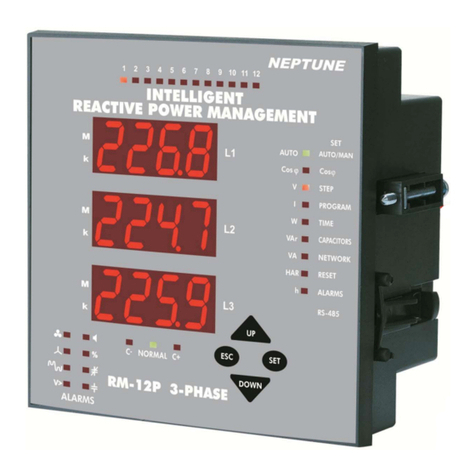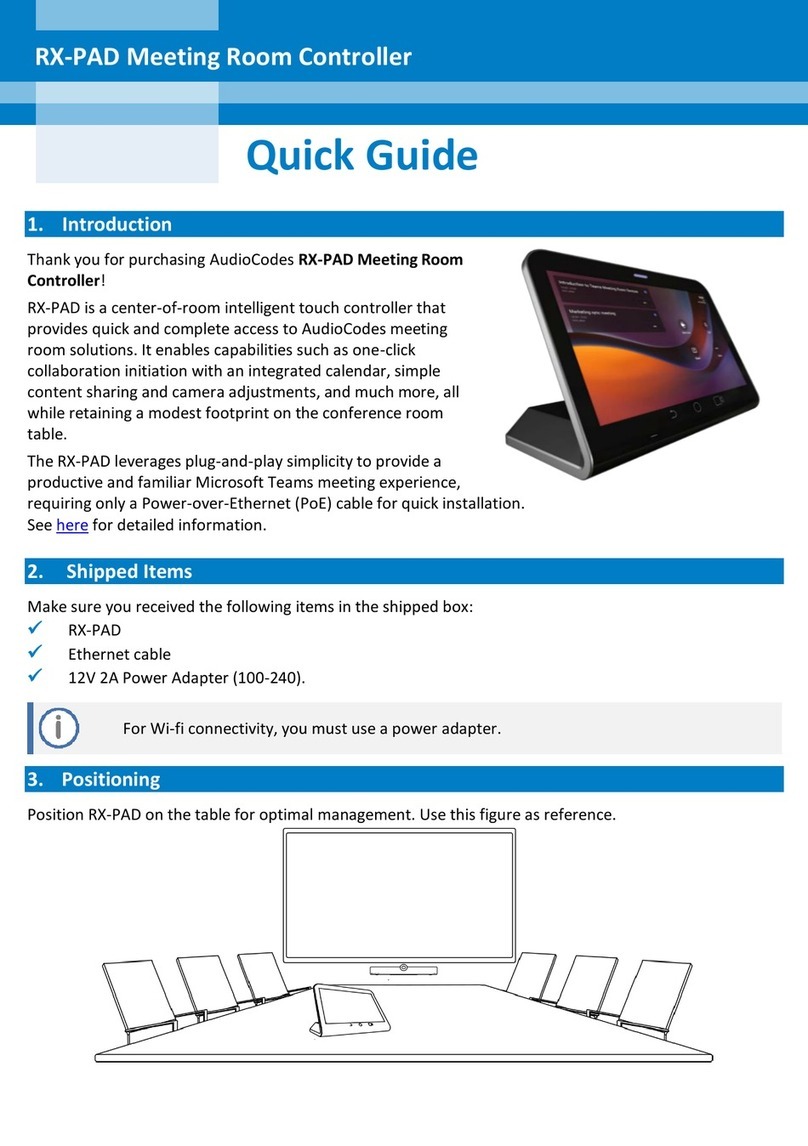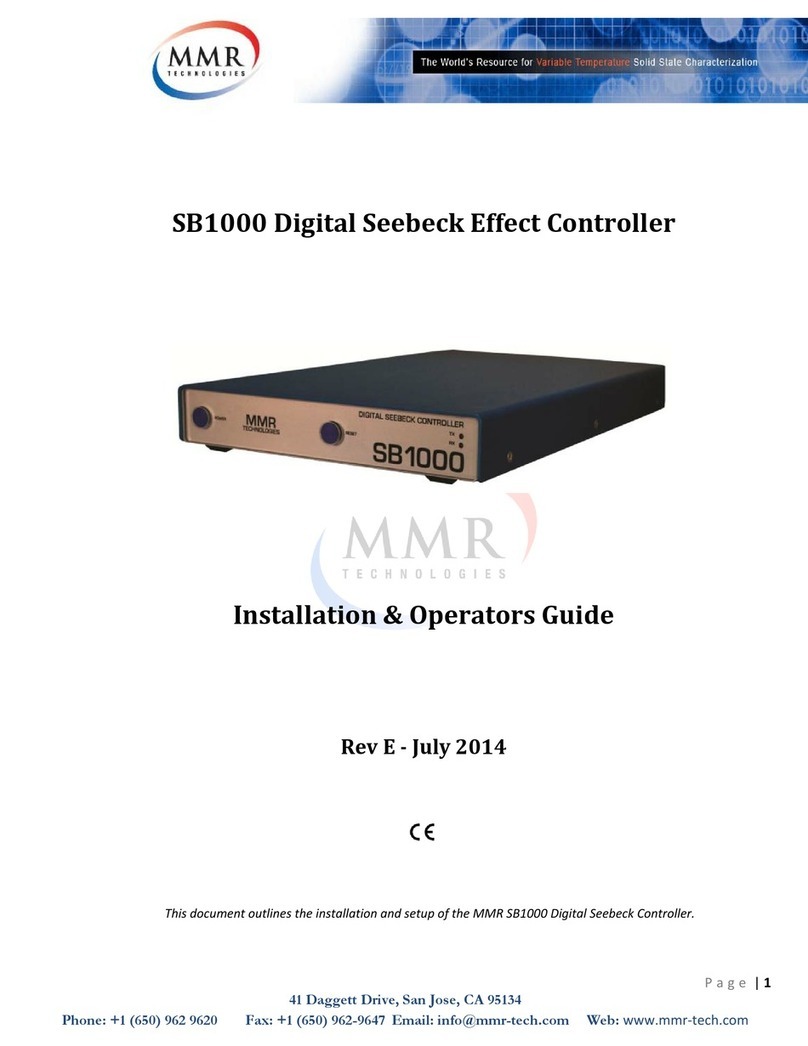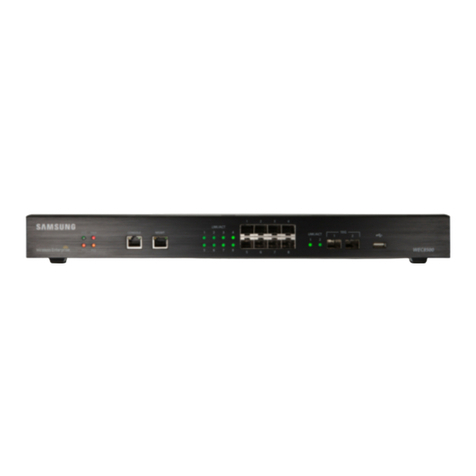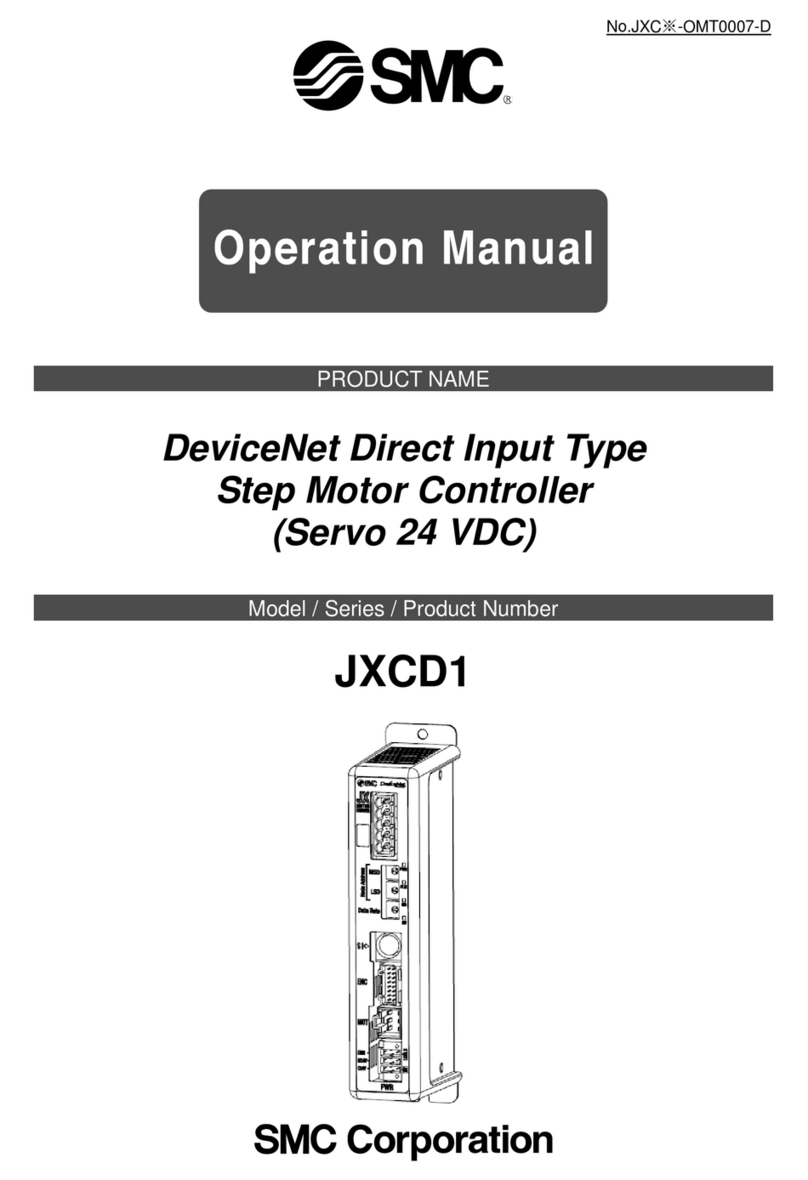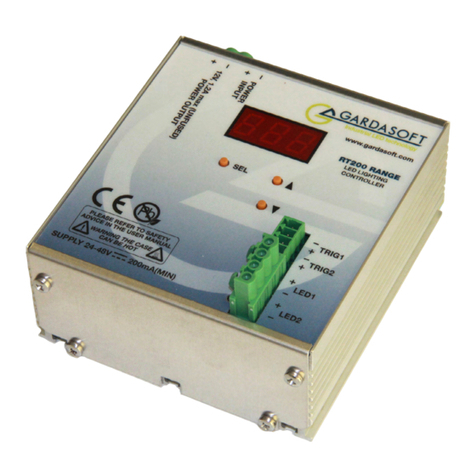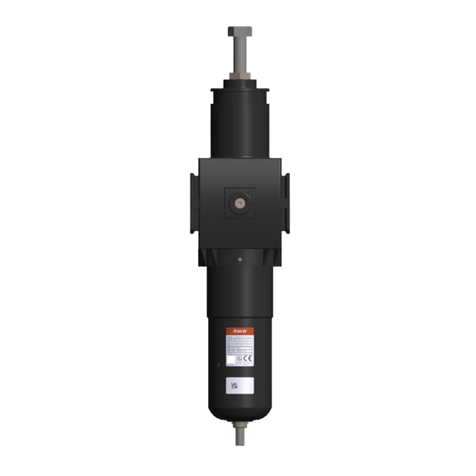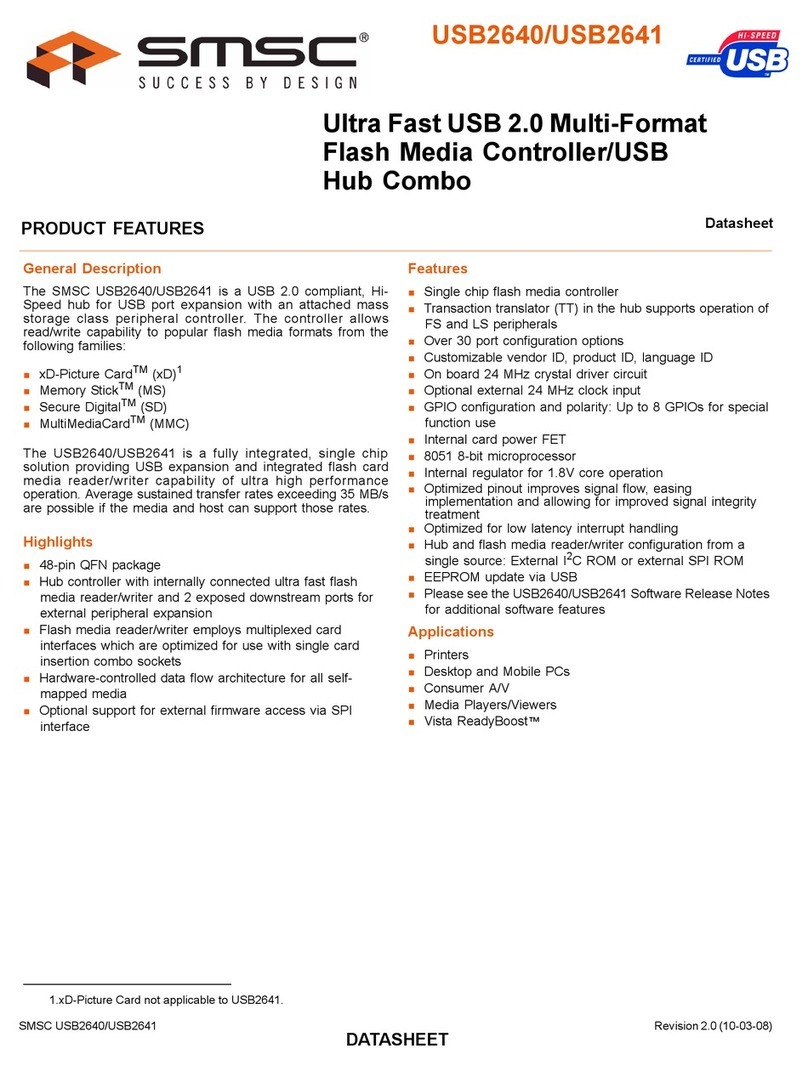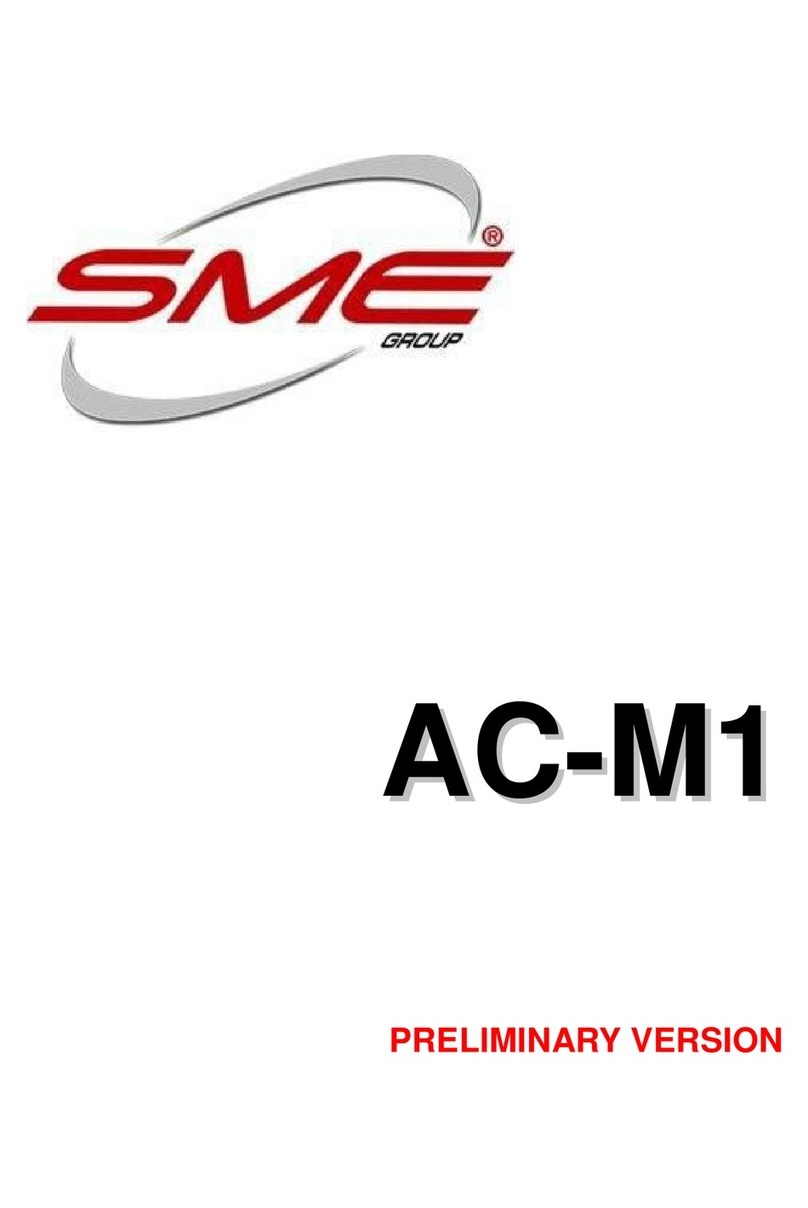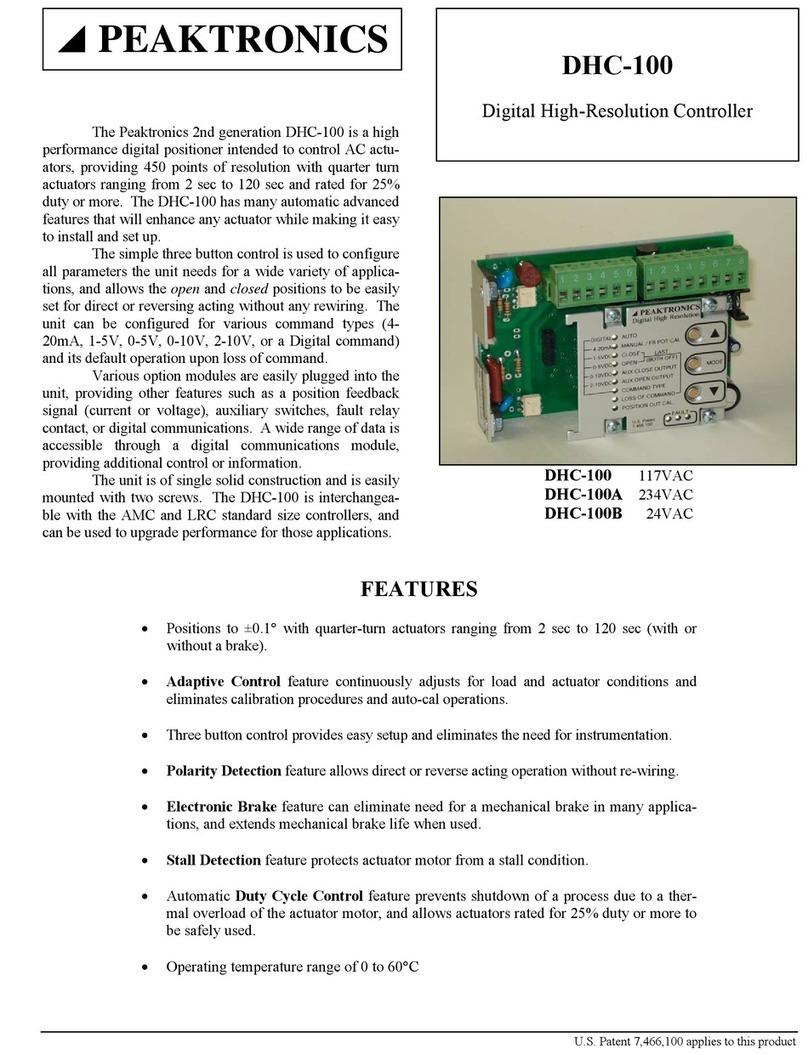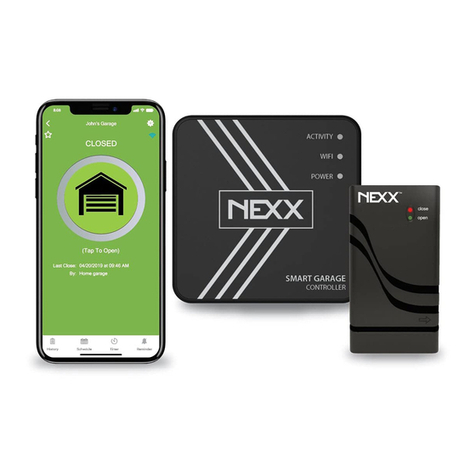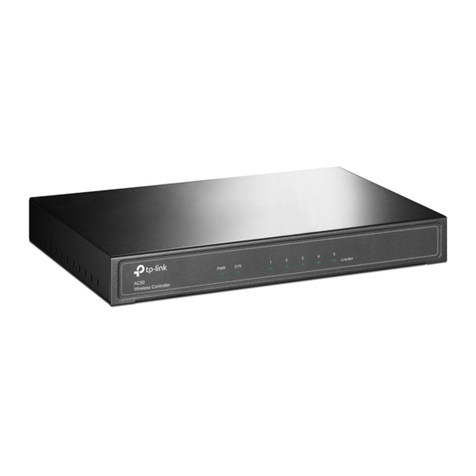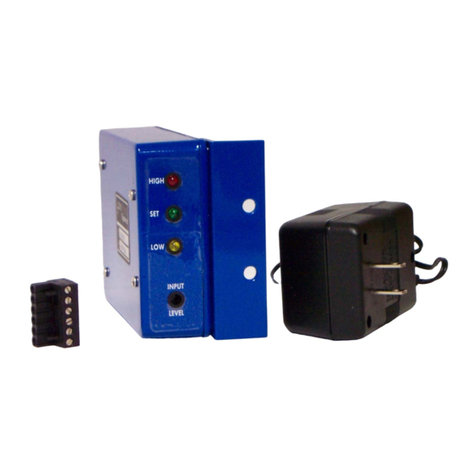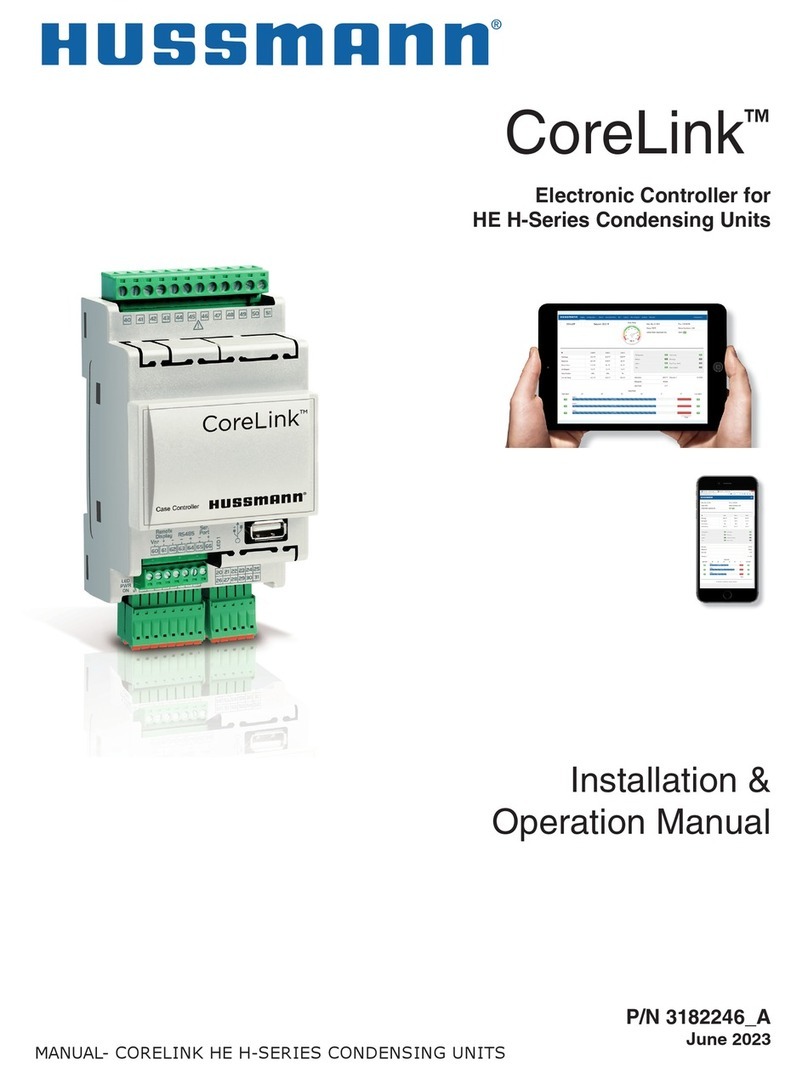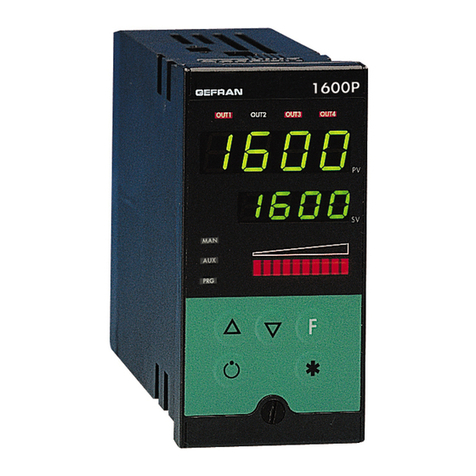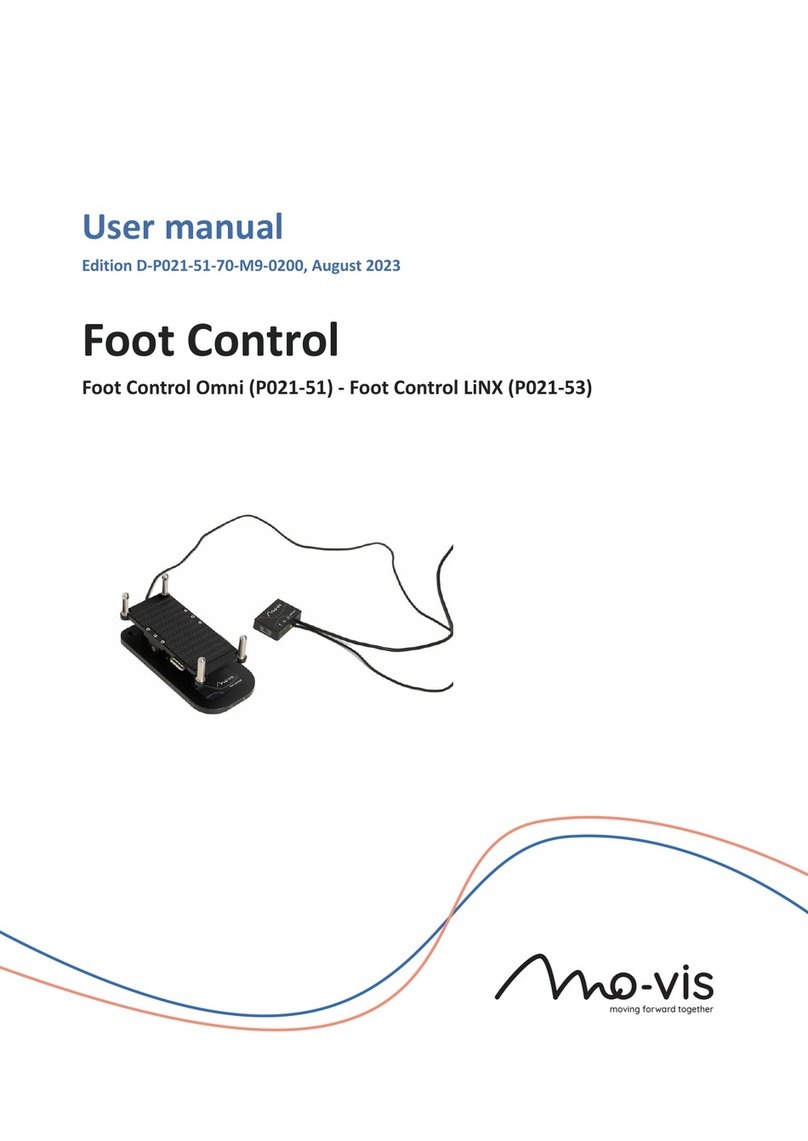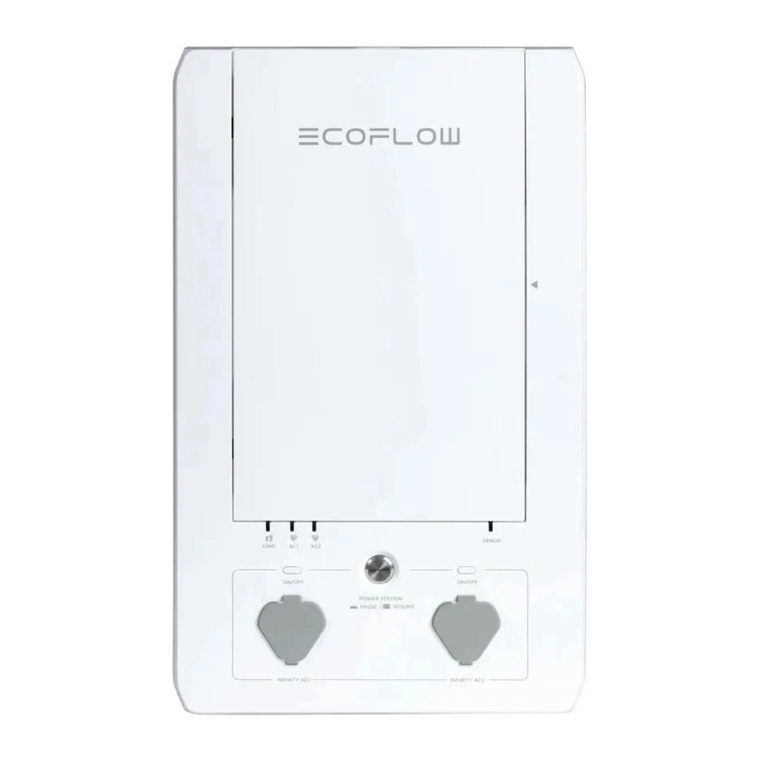Neptune DUCATI REGO User manual

Instruction Manual
Automatic Reactive Power Controller
Revision-0
Firmware - 4.01 March, 2004
REGO

DUCATI
energia
REGO
REGO
POWER
POWER
1
1
23 4
5
REACTIVE POWER CONTROLLER
REACTIVE POWER CONTROLLER
RS-485
10
x
x
-
+
-
+
DATA
ALARM
RESET
ALARM
RESET
AUTO
MAN
REMOT
MAX VAC
250 3A
NC2
NC1
NC1
54321C
STE
MAX VAC 5
250 A
MAINS CONNECTION
MAINS CONNECTION
OPER.TYPE C.T.POST.
FF1
FF1
FF2
F-N
L1
L2
L1
L2
L2
L1
L3
L1
N
-
-
-
0
230V 400V
230V400V
O
LK
L1
L2
L3
5A
CT./
N
DUCATI
energia
energia
REACTIVE POWER CONTROLLER
REACTIVE POWER CONTROLLER
REGO
MADE IN TIALY
REGO
MADE IN TIALY
DUCATI
energia
234567891011
10
AUTO/MAN
DATA
DUCATI
N.O.
EXT.FAN CONTROL
MAX.250V 6A
N.O.
REMOT
MAX.250V 6A
NC2
NC1
K
C1
L
OPERATING
TYP
FF2
F-N
C.T.
POSITION
L1
L1
L1
L1
L2
L2
L1 N
L1
L3
-
-
400V 230V O
400V
230V
0
STE
MAX250V 6A
1
2
3
4
5
6
7
8
9
10
11
12
C2
L2
L3
CT../5A
N
NC2
Fig-1 - Front and Rear panel of Rego-5
Fig-2 - Front and Rear panel of Rego-12

MAINS
T/23
NR/L1S/L2
CT../5A
SEE FIG.3
400V (V2)
230V (V1)
DV
USE 200mA
FUSE FOR
VOLTAGE
INPUTS
REGO STEPS 12
REGO STEPS 7
REGO STEPS 5
1
C2
234567 89
K12
10 11 12
K1
K2
K3
K4
K5
K6
K7 K8
K9
K10
K11
C1
LOAD
K
L
FF1 CONNECTION
MAINS -380-415V
T/23
NR/L1S/L2
REGO
REGO
400V (V2)
230V (V1)
FF2 CONNECTION
F-n CONNECTION
Only for
single phase network
CT../5A
CT../5A
CT../5A
K
L
K
K
L
L
400V (V2)
400V (V2)
230V (V1)
230V (V1)
USE 200mA
FUSE FOR
VOLTAGE
INPUTS
Fig.-3 - Mains Connection
Fig.-4 - Electrical Connections
LOAD

13
2
9
4
6
1011
12 13
14 15
16
17 18 19 20
MANUAL
PROGRAMMING
SELF-
ACQUISITION
YES
YES
NO
NO 7
8
5
Simplified Diagram relative to First Powering up
1. POWER THE CONTROLLER
2. DISPLAYALTERNATELY SHOWS “IL”AND “- - -”
3. ENTER “IL” PARAMETER MAINS C.T. RATIO (e.g. w/ C.T. 200/5 enter 40)
4. “+”AND “-” TO CHANGE THE PARAMETERAND “DATA” KEYTO CONFIRM
5. “FAS” DISPLAYED IN TURN WITH “0” OR “1”
6. IS THE CONTROLLER INSTALLED ON A DUCATI ENERGIAPOWER FACTOR CORRECTION SYSTEM?
7. DISPLAYALTERNATELY SHOWS “COS”AND THE SYSTEM POWER FACTOR
8. STEPS SWITCHED INAND OUT OF SERVICE TOACHIEVE DESIRED POWER FACTOR
9. STEPS SWITCHED IN AND OUT THREE TIMES (AUTO-ACQUISITION)
10. DISPLAYALTERNATELY SHOWS “C1”AND THE VALUE MEASURED FOR THE FIRST BANK
11. PRESS “DATA” KEY TO DISPLAY VALUE OF SUBSEQUENT BANKS
12. ARE THE MEASURED POWERS CORRECT?
13. PRESS THE “DATA” KEY THREE TIMES TO EXIT
14. STARTANEW SELF-ACQUISITION OR CARRY OUTA MANUAL PROGRAMMING
15. TO LAUNCHA NEWAUTO-ACQUISITION PROCEDURE PRESS “ALARM/ RESET” + “+”
16. FOR MANUAL PROGRAMMING PRESS ALARM/RESET” +“-”
17. DISPLAY SHOWS “Pro” PRESS “+” OR “-” TO SETTHE DESIRED PROGRAM (SEE TABLE 1 - PAGE 72)
18. PRESS THE “DATA” KEY
19. DISPLAY SHOWS “PPC” PRESS “+” OR “-” TO SETTHE VALUE OF THE FIRST BANK
20. PRESS THE “DATA” KEY

CONTENTS
(1) SIMPLIFIED DIAGRAM RELATIVE TO FIRST POWERING UP ........... 52
(2) SAFETY 56
(3) GENERAL DESCRIPTION 57
(4) HOW IT WORKS 58
(5) MAINS CONNECTION 59
(6) INSTRUCTIONS FOR INSTALLING THE. CT. 60
(7) POWERING UP FOR THE FIRST TIME 62
(8) SUBSEQUENT STARTUPS 64
(9) TESTING CONTROLLER PERFORMANCE 65
(10) SETUP PARAMETERS 65
(11) DISPLAY OF MEASUREMENTS 75
(12) ADDITIONAL FUNCTIONS 75
12.1 MANUAL OPERATING MODE 75
12.2 DISPLAYING THE POWERS OF SINGLE STEPS 76
12.3 PROCEDURE FOR CHECKING THE EFFICIENCY
OF THE SINGLE STEPS 77
12.4 PROCEDURE FOR ENABLING/DISABLING OUTPUT RELAYS IN THE
AUTOMATIC OPERATING MODE 77
12.5 DISPLAYING THE COUNTER OF TOTAL OPERATIONS PERFORMED
BY EACH RELAY 78
...........
...........
...........
...........
...........
...........
...........
...........
...........
...........
...........
...........
...........
...........
...........
...........
12.6 DISPLAYING THE SOFTWARE RELEASE ........... 79
12.7 PROCEDURE FOR TESTING CONNECTIONS TO CAPACITOR STEPS ........... 79
12.8 GENERATOR POWER FACTOR CORRECTION MODE ........... 80
12.9 TOTAL RESETTING OF SETUP PARAMETERS ........... 81
(13) SIGNALSAND ALARMS ........... 82
13.1 SIGNALING OF POWER FACTOR CORRECTION FAILURE ........... 82
13.2 OVER VOLTAGE SIGNAL ........... 83
13.3 OVER TEMPERATURE PROTECTION ........... 84
13.4 PROTECTIONAGAINST EXCESSIVE HARMONIC DISTORTION ........... 84
13.5 PROTECTIONAGAINST MAINS VOLTAGE DIPS AND DROPS ........... 85
13.6 DISPLAY OF ALARM COUNTERS ........... 86
13.7 CHANGING THEALARM ACTIVATION MODES ........... 86
(14) HIDDEN MENU ........... 87
(15) LIST OF MAIN KEYSAND ASSOCIATED FUNCTIONS ........... 91
(16) TROUBLESHOOTING ........... 92
(17) TECHNICAL SPECIFICATIONS ........... 94

NOTE:
combination of 2 keys:
AUTO/MAN +
AUTO/MAN +
+ AUTO/MAN
4) HOW IT WORKS
5) MAINS CONNECTION
“FF1”
DUCATI ENERGIA
“FF2”
Warning:
“F-n”
6) INSTRUCTIONS FOR INSTALLING THE C.T.
VERY IMPORTANT:
ab
The front panel of REGO features a series of keys
for accessing functions and programming; some functions
are activated by pressing a in this
manual, when mention is made of a two-key combination
(e.g. ), it means that the user must press
the first key and, without releasing it, then press the second
one. (In fact the combination activates a
different function from the combination .
The measured current from the mains C.T. is filtered and
compared with the required power factor and the insensitivity
zone: if the conditions set by the user thus require, the (or )
LED will light up and all the banks necessary in order to reach the
set power factor will be switched into service in as little time as
possible (compatibly with the capacitor discharge time T1).
The controller automatically adjusts to the direction of circulation
of the current drawn from the C.T.
If the current to the C.T. secondary winding falls below 200mA,
the controller will disconnect all the banks and the display will
show“COS” in turn with flashing “.-.-.” .
It will go into standby until a current exceeding that value is
restored.
The REGO reactive power controller may be connected to the
mains according to three different configurations (see diagram in
Fig. 3 - Page 3).
In this configuration (default) the C.T./5A is positioned on
phase R(L1) and the reference voltage is drawn from the
line voltage between phases S(L2) and T(L3). This is the
classic varmetric connection. This is the type of
connection utilized in automatic
power factor correction systems.
In this configuration the C.T./5A is on phase R(L1)
whereas the reference voltage is the line voltage
between phase R(L1) itself and phase S(L2).
if the cyclical direction of the power supply phases is
not known, configuration FF2 may give rise to an error in the
power factor measurement.
In this configuration the C.T./5A is on phase R(L1)
whereas the reference voltage is the phase-neutral
between phase R(L1) itself and the neutral N. Use this
configuration only for single-phase networks.
The C.T. must have a value:
– at the primary winding: equal to or relatively higher than the
maximum current absorbed by the load downstream from
the C.T. itself.
– at the secondary winding: 5A.
– The C.T. must be connected both upstream from the power
factor correction system and upstream from the load (See
Fig.5 positions a and b).
– The C.T. must never be directly connected on the load power
supply line (See Fig.5 position c) or directly on the power
factor correction line (See Fig.5 position d).
– In the FF1 connection configuration the C.T. must be
connected to the phase not used for the voltmetric supply to
the controller. If the controller is installed on a DUCATI
energia power factor correction system the C.T. phase must
be L1/R; see Fig.5 position and ).
2) SAFETY
WARNING
DUCATI ENERGIA
3) GENERAL DESCRIPTION
This automatic power factor correction controller was
manufactured and tested in conformity with current standards and
left the factory in perfect conditions of technical safety.
In order to maintain these conditions and ensure safe operation,
the user must abide by the instructions provided herein.
This device must be installed by qualified personnel in
accordance with the equipment regulations currently in
force in order to prevent injury or damage to
persons or property.
Maintenance or repair work
must be managed solely by authorized personnel.
Before undergoing any maintenance or repairs,
the device must be disconnected from all power sources.
s.p.a. disclaims all liability for any injury or
damage caused to persons or property as a result of improper use
of its products.
In view of the continuous evolution of our technology, we reserve
the right to change the specifications contained herein without
notice. The catalogue descriptions and data shall thus have no
contractual validity.
The REGO reactive power controller is designed to control and
regulate capacitor banks. It operates on the basis of
microprocessor technology, which provides accurate, reliable
power factor measurements. The power factor is controlled by
switching capacitor banks according to the reactive power
requirements of the load: if more than one step is needed in order
to reach the cos. required, REGO activates all the steps
necessary with a delay between one and the other equal to the set
time “T2”. The number of switching operations is thereby reduced
and where the capacitor banks have an equal value, they will be
used n a homogeneous manner.
The controller features both automatic and manual operating
modes. In addition, the powers associated with the steps can be
automatically acquired thanks to the “Auto Acquisition” function.
At the end of this procedure, moreover, the controller also
automatically selects the most appropriate switching sequence.
Alternatively a user program, chosen among the numerous
available options, can be manually set. Thanks to this function the
controller will be able to intervene and correct the system PF more
quickly: in fact, on the basis of real-time power measurements and
the known powers associated with individual steps, it can
calculate how much reactive power is needed to bring the cos. to
the desired value and switch on all the necessary steps together
(with just a settable delay “T2” between one and the next), as
noted previously.
The 7- or 12-step model also features an Rs485 serial interface
with
standard “DUCATI” communication protocol which enables the
user to
connect the device to a network of instruments and read the
measured data remotely from a connected PC.
REGO also offers other useful functions, such as panelboard
temperature measurements for controlling an external cooling fan
(in
the 7- or 12-step model), a series of protections and associated
alarms to safeguard the capacitor banks and guarantee efficient
system performance, the possibility of counting the number of
switching operations of a certain step to prevent possible
downtimes due to failures and thereby increase the system’s
reliability, and other functions as well.
i

(7) POWERING UP FOR THE FIRST TIME
DATA
SETTING THE IL PARAMETER:
The REGO regulator behaves differently the first time it is started up since it will need the IL parameter (mains C.T. ratio ) to be set in
order to work; the regulator cannot be started up without setting this parameter. On subsequent occasions it will utilize the previously
programmed parameter, unless the user wishes to change it. As soon as the controller is switched on, 8.8.8. will appear on the
display for a few seconds and all the LEDs will light up to enable their efficiency to be checked.
7.1 The first time the controller is powered the display will show “IL” in turn with flashing “- - -” and remain in this situation until the
mains CT ratio is set;
press the or key to change the parameter and the key to confirm.
for example, if the user has a C.T. with a ratio of 200/5, the parameter to set must be IL= 40 (mains
CT ratio);
Other Eg: CT 300/5 IL=60; CT 350/5 IL=70; CT 400/5 IL=80.
7.2 Subsequently the controller will alternately display “FAS” an1 “0” or “1”; at this stage the system will read and display the direction
of the incoming current from the C.T. (0 = direct / 1= inverted). It is only an indication.
LOADS
MT
BT
TRANSFORMER
ROOM
MAIN
SWITCH
INSTALLATION
CORRECT
INSTALLATION
CORRECT
DEDICATED
SWITCH
FOR POWER
FACTOR
CORRECTION
SYSTEM
INSTALLATION
INCORRECT
INSTALLATION
INCORRECT
L2
L3
T.A.
C.T.
T.A.
C.T.
T.A.
C.T.
T.A.
C.T.
a
b
c
d
L1
S1
S2
L1 L3L2
Fig.-5 - Positioning of C.T.

NOTE:
DUCATI ENERGIA
7.3 DUCATI ENERGIA
if the incoming current is insufficient (less than 200mA),
REGO cannot determine its direction and will stand by in this
status until current is supplied.
If the controller is installed on a automatic
power factor correction system (pre-programmed controller), no
type of setting will be required and the controller will be ready for
perfect operation: it will alternately display “COS” and the power
factor of the system.
Ex.
If the controller is not installed on a
automatic power factor correction unit (virgin controller),
after displaying the “FAS” parameter it will automatically
launch the automatic procedure for acquiring the powers of
the single capacitor steps. The capacitor steps will be
switched on and measured in sequence a total of three times
each. At the end of this procedure the controller will
alternately display “C1” and the measured power value of the
first step; the power of the next step can be displayed by
pressing the DATAkey.
Ex.
If the power measurements are incorrect, from the same menu
the user can press:
– ALARM/RESET + to launch a new auto acquisition
procedure
– ALARM/RESET + to enter the manual programming
mode (see chap.10.8 - Page 68)
FOR A CORRECT WORKING OF THE
CONTROLLER, C H E C K T H A T P O W E R S
MEASURED BY THE CONTROLLER ARE CORRECT.
If the power measurements are correct, the user can press the
DATAkey for three seconds to exit this menu and the controller will
start to work automatically, displaying the letters in turn
with the system power factor.
Ex.
As soon as the controller is switched on, 8.8.8. will appear on the
display for a few seconds and all the LEDs will light up to enable
their efficiency to be checked.
Subsequently the controller will alternately display and “0”
or “1”;
Ex.
at this stage the system will read and display the direction of the
incoming current from the C.T. (0 = direct / 1= inverted). It is only
an indication.
if the incoming current is insufficient (less than 200mA),
REGO cannot determine its direction and will stand by in this
status until current is supplied.
NOTE:
“COS”
8) SUBSEQUENT STARTUPS
“FAS”
NOTE:
At this point, the controller no longer requires any type of setting
and will be ready for perfect operation: it will alternately display
“COS” and the system power factor.
Ex.
To immediately check whether the controller is working
efficiently, the user should keep in mind that:
– When the load is started, the controller should turn on the
LED and switch the capacitor steps into service.
– If the load is reduced or removed, the controller should turn
on the LED and disconnect capacitor steps accordingly.
– When the and LEDs are off, the controller should display a
cos. close to the one set (see chap.10.2 - Page 66).
– As the inductive cos. increases up to 1, the current circulating
upstream from the power factor correction decreases,
whereas it increases with the capacitive cos.
N.B.:If the controller is installed on a DUCATI energia
automatic power factor correction system we advise the
user not to change any setup parameters with the exception
of and .
To enter the setup menu press The display will show the
following parameters:
10.1 = Mains frequency.
The parameter is displayed in turn with the measured
value. It is only an indication.
Press to go on to the next parameter
10.2 = Power factor desired in the system.
The parameter is displayed in turn with the default
value “0.95”.
The value can be changed using the key.
Press DATAto go on to the next parameter
10.3 “UFF” = Mains voltage
9) TESTING CONTROLLER PERFORMANCE
10) SETUP PARAMETERS
COS IL
“Fr”
“Fr”
DATA
“COS”
“COS”
+.
or
The “UFF” parameter is displayed in turn with the default
value “400”.
The value can be changed using the or key (possible
values 400 or 230).
If the controller is powered by an auxiliary transformer, the
parameter should be set at the rated primary voltage
of the auxiliary transformer (range 100..700). To change
this parameter, press:
N.B.:
UFF
ALARM/RESET + to increase the value.
ALARM/RESET + to decrease the value.

DO NOT CHANGE THIS PARAMETER IF THE CONTROLLER
IS INSTALLED ON A DUCATI ENERGIA POWER FACTOR
CORRECTION SYSTEM.
DATA
“IL”
“IL”
IL IL IL
DATA
“COn”
“COn”
DO NOT CHANGE THIS PARAMETER IF THE
CONTROLLER S INSTALLED ON A DUCATI ENERGIA
POWER FACTOR CORRECTION SYSTEM.
DATA
“SUP”
“SUP” “U2”
U1 U2
DO NOT CHANGE THIS PARAMETER IF THE
CONTROLLER IS INSTALLED ON A DUCATI ENERGIA
POWER FACTOR CORRECTION SYSTEM.
DATA
“FAS”
“FAS”
On blo
DO NOT CHANGE THIS PARAMETER IF THE
CONTROLLERS INSTALLED ON A DUCATI ENERGIA
POWER FACTOR CORRECTION SYSTEM.
“ACq”
“ACq” no
DATA
no
Press to go on to the next parameter
10.4 = Mains C.T. ratio.
The parameter is displayed in turn with the value
previously set by the user.
The value can be changed using the or key.
Setting examples:
C.T. 300/5 =60; C.T. 350/5 =70; C.T. 400/5 =80
Ex.
Press to go on to the next parameter
10.5 = Type of connection of controller to mains.
is displayed in turn with the default value “FF1”.
The user can change this parameter using the or key
(possible settings: FF1, FF2, F-n - see chap 5 - Page 59).
Press to go on to the next parameter
10.6 = Setting of terminal used to power the controller.
is displayed in turn with the default value .
The user can change this parameter using the or key
(possible settings: /230V, /400V).
Press to go on to the next parameter
10.7 =Activation or deactivation of automatic adjustment
of mains C.T. direction.
is displayed in turn with the default value “0n”
(autoadjustment enabled).
The parameter can be changed using the or key
(possible settings: /auto-adjustment, /C.T. direction
fixed).
10.8 = Menu for launching the procedure for acquiring the
power of single steps and setting their switching logic.
is displayed in turn with the default value “ ”.
The parameter can be changed using the or key and
confirming by pressing ; the possible settings are:
= no acquisition procedure will be carried out.
AUt
“C1”
DATA
DATA
Pr
Pro
PFC
DATA
SWITCHING LOGICS
LINEAR LOGIC
GEOMETRIC LOGIC
= a new automatic acquisition procedure will be carried out.
The capacitor steps will be switched on and measured in
sequence a total of three times each.At the end of this procedure
the controller will alternately display and the measured
power value of the first step; the power of the next step can be
displayed by pressing the key.
Press for three seconds to go on to the next parameter.
= the switching logic & power of the single steps is manually
set.
When the letters “Pro” appear, select the desired program (see
Table 1 - Page 72) using the or key and press DATA to
confirm.
Thereafter, when the letters “PFC” appear, set the value in kVAr
of the first power factor correction capacitor bank (always
connected to output terminal “1”), again using the or key;
Example: if you have an automatic 100kVAr system with power
70 steps of 10-10-20-20-40 the parameters should be set as
follows:
= 26 (see Table 1 - Page 72)
= 10.
Press to confirm and go on to the next parameter.
The controller can adopt one of three logics to switch the
capacitor banks in and out of service in order to achieve and
maintain the set cosphi, i.e.:
This logic is identified by the code 1:1:1 and presupposes the
condition that all capacitor banks have equal powers. Given a
situation such as the one illustrated in the table,
Bank No. 1 2 3 4 5 6
Status OFF ON ON ON OFF OFF
the controller will switch on bank no. 5 if a bank needs to be
switched into service and switch off bank no. 2 if one needs to be
switched off. This will ensure that all the banks will work and as a
result component wear will be evenly distributed among them.
It is identified by the code 1:2:4 and presupposes the condition
that each bank has a power equal to or at most double the power
of the one that precedes it. Assuming that the banks have powers
as shown in the table,
Bank No. 1 2 3 4 5 6
Power 10 20 40 40 40 80
and that the load requires 50 kVAr, the controller will switch on the
1st, 2nd and then 3rd banks, thereby reaching 70 kVAr. At this
point it will switch off the 1st and then the 2nd, which will bring it to
40 kVAr, and finally it will switch the 1st back on to reach 50 kVAr.
As may be observed, this logic makes it possible to obtain a large
number of steps with a limited number of banks. However, the
number of switching operations is not evenly distributed among
the banks, resulting in greater wear on the first ones.

Parameter Description Range Default
Fr
COS 0.95
UFF 400
IL
Con FF1
SUP
U2
FAS
On
ACq
no
s:s:s:
Table 2: Setup parameters
(10.1) Measured mains 50 or 60 Hz -/-
Freq. only an indication
(10.2) Power factor to be 0.8IND ÷
achieved within the system 0.8CAP
(10.3) Voltage rating of controller 230 or 400
(10.4) Mains C.T. ratio. 1...3000
Eg: with CT100/5 set 20
Eg: with CT200/5 set 40
(10.5) Type of connection FF1
of controller to mains. FF2
F-n
(10.6) Setting of terminal used U1 (230V)
to power the controller. U2 (400V)
(10.7) Auto-adjustment of
mains C.T. direction:
On=auto-adjustment On
blo= fixed direction blo
(10.8) Acquisition of step power:
no = no acquisition
procedure no
AUt=automatic acquisition Aut
Pr = manual setting Pr
(10.9) Display of set logic 1:1:1 -/-
1:2:2
1:2:4
11) DISPLAY OF MEASUREMENTS
C.O.S. -.-.-.
DATA
“COS”
“UFF”
“IL”
“PA”
“PL”
“thd”
“C”
12) ADDITIONAL FUNCTIONS
12.1 MANUAL OPERATING MODE
AUTO/MAN
r1 On OFF
Normally the display shows the system cos..
Aminus sign indicates a capacitive power factor.
N.B.: In the event of a power cut, the controller will not be able to
calculate the cos phi and will alternately display “ ” & “ ”.
Press the key to display the measurement readings: every
time you press, the next parameter will be displayed.
The parameters are displayed in the following sequence:
(system power factor)
(effective measured line voltage)
(line current measured at the primary winding of the CT)
(equivalent active power absorbed by load, in kW)
(equivalent reactive power absorbed by load, in kVAr)
(crest factor normalized to 1: values less or greater than
1 if harmonic distortion is present)
(temperature inside panel board enclosure at the point
where the controller is installed; the value shown may be
considered reliable after about 1 hour of operation)
Press the key until the
corresponding LED lights up: the controller is now ready to be
programmed in the manual mode.
The user must indicate the desired status for every output relay:
at the end of the programming procedure, the controller will set all
the capacitor steps in the status requested. Operatively, REGO
indicates
“ ” in turn with the status (which can be “ ” or “ ”);
Ex.
o
for about two seconds
SEMI-GEOMETRIC LOGIC
IMPORTANT
first
s:s:s:
DATA
DATA
IMPORTANT: If the controller is installed on a DUCATI
ENERGIA power factor correction system, we advise the user
not to change the default parameters (See Table 2 - Page 74).
It is identified by the code 1:2:2 and the power of the first bank
must be half that of the others, which must all be equal. The first
bank is managed according to a geometric logic whereas all the
others, which have equal powers, are managed according to a
linear logic.
: the first output relay must always be connected to
the capacitor bank with the least power. If the powers of the steps
are all equal, only make sure that the first step is not left without
controlled capacitors. Moreover, in the event that a specific user
program is configured (as in Table 1), the value of the bank
must be set.
10.9 “ ” = Display of set logic At the end of an automatic
acquisition or manual setting procedure, the controller will
display a switching sequence and 72 will start to work
automatically. If the controller cannot identify an optimal
sequence, it will set the 1:1:1 logic.
Ex.
Press to go back to the first parameter in the menu. To
exit the setup menu, keep the key pressed down for
three seconds
Program N° Sequence N° OF DESCRIPTION
Setting of N° of
Pr1 1:1:1 2 steps and power of
bank connected to the
first output relay.
Pr2 1:1:1 3 “
Pr3 1:1:1 4 “
Pr4 1:1:1 5 “
Pr5 1:1:1 6 “
Pr6 1:1:1 7 “
Pr7 1:1:1 8 “
Pr8 1:1:1 9 “
Pr9 1:1:1 10 “
Pr10 1:1:1 11 “
Pr11 1:1:1 12 “
Pr12 1:2:2 2 “
Pr13 1:2:2 3 “
Pr14 1:2:2 4 “
Pr15 1:2:2 5 “
Pr16 1:2:2 6 “
Pr17 1:2:2 7 “
Pr18 1:2:2 8 “
Pr19 1:2:2 9 “
Pr20 1:2:2 10 “
Pr21 1:2:2 11 “
Pr22 1:2:2 12 “
Pr23 1:2:4 2 “
Pr24 1:2:4 3 “
Pr25 1:2:4 4 “
Pr26 1:2:4 5 “
Pr27 1:2:4 6 “
Pr28 1:2:4 7 “
Pr29 1:2:4 8 “
Pr30 1:2:4 9 “
Pr31 1:2:4 10 “
Pr32 1:2:4 11 “
Pr33 1:2:4 12 “
Table 1: User programs (selection of SEQUENCE and N° OF
STEPS)

press or to choose the status of the relay you want to set in
the manual operating mode; press the key to display the
status of the subsequent relay. After viewing the status of the last
relay, press the key to exit this function.
Press to access the relevant menu (“ ” will appear
on the display and will flash);
when the key is pressed, REGO will alternately display “ ”
and the value in kVAr associated with the first step.
Ex.
Every time you press the key, the controller will show the
powers of the individual steps in sequence; after viewing the last
step press the key to exit this function.
Press to access the menu pertaining to the procedure
for checking the powers of the capacitor steps (the display will
show “ ” and will flash).
Pressing the key will cause REGO to switch off all the banks
and start the procedure for measuring the power of all the steps
(the cycle will be launched three times to provide a better
measurement). If REGO detects differences of more than 25% in
the power that was associated with the step during the previous
auto-acquisition procedure, the corresponding LED will flash. At
the same time the letters “ ” will appear on the display
and the user must disable the step by pressing ; if
this key is not pressed within a few seconds, the operation will be
terminated without any effect taking place. Once the check is
completed, REGO will function as before, with the exclusion of
any steps detected to be faulty, whose LEDs will continue flashing
to signal their status of unavailability.
The user can decide which relays the controller must not use in
the automatic mode.
Press + to access the menu for enabling/disabling
the output relays (the display will show “ ” and will flash).
When you press the key, the + LEDs will flash and the
display will start showing the status of the first relay: “ ” will be
displayed in turn with its status (“ ” or “ ”).
Ex.
At this point you can choose the status of the relay, pressing the
key to switch it “ ” or the key to switch it “ ”. Press the
key to display the status of the next relay; after viewing the
status of the last relay, press the key to exit this function.
DATA
DATA
12.2 DISPLAYING THE POWERS OF SINGLE STEPS
DATA + CP
C1
DATA
DATA
12.3 PROCEDURE FOR CHECKING THE EFFICIENCY OF
THE SINGLE STEPS
DATA +
ChP
rSt
ALARM/RESET
12.4 PROCEDURE FOR ENABLING/DISABLING OUTPUT
RELAYS IN THE AUTOMATIC OPERATING MODE
AUTO/MAN
Abi
r1
On OFF
On OFF
DATA
DATA
12.5 DISPLAYING THE COUNTER OF TOTAL OPERATIONS
PERFORMED BY EACH RELAY
AUTO/MAN
Cnt”
C1
.
DATA
DATA
Important:
12.6 DISPLAYING THE SOFTWARE RELEASE
ALARM/RESET + DATA
12.7 PROCEDURE FOR TESTING CONNECTIONS TO
CAPACITOR STEPS
K
tSt AUTO/MAN
AUTO/MAN
12.8 GENERATOR POWER FACTOR CORRECTION MODE
AUTO/MAN
Inu On OFF
The user can display the number of switching operations
performed by each relay controlling the capacitor banks.
Press + to access the relevant menu (the display
will show “ and will flash).
When you press the key, the + LEDs will flash and the
display will show the operation performed by the first output relay.
“ ” will appear, followed by the number of switching operations.
A“ ” is used to separate thousands.
Ex.
Press the key to display the number of switching
operations of the next relay; after viewing the data of the last
relay, press the key to exit the function.
when an output relay counter totals over 100,000
switching operations, the LED corresponding to the step will flash
to warn of the need to overhaul/replace the contactors. The
output will not be disabled, only a warning will be signaled.
To display the software release number of the controller, press
: the display will alternately show “Flr”
and the firmware version “x.xx”.
An automatic procedure is provided to make it easier to check the
efficiency of connections to the capacitor steps, independently of
the mains network status and the presence of current on
terminals “ ” ed “L”. This procedure can be launched by pressing
DATA + AUTO/MAN regardless of the current controller situation
(“ ” will appear on the display and the LED will
flash);
if the procedure is launched during normal operation, it will be
necessary to press the key for about another 2
seconds to confirm the launching of the test. The procedure
consists in switching on the individual steps in sequence at two-
second intervals. The closing time of an individual step is five
seconds.
To correct the power factor of the generators, the user must set
this operating mode, which involves inhibiting the automatic
mains CT direction adjustment function and configuring the
signals accordingly.
This operation must be carried out with the mains powered by the
generator.
Press + to access the menu for fixing the C.T.
direction. When you press the keys, the LED will flash and
you must press the corresponding key.At this point the and
LEDs will flash and the controller will simultaneously display
“ ” (INV) in turn with “ ” or “ ”.

To set the appropriate operating mode for correcting the power
factor of generators, press the key: the word “ ” will appear. If,
on the contrary, you wish to enable the C.T. direction auto-
adjustment function
(in the case of traditional power factor correction of loads) press
the key: the word “ ” will appear to confirm the selection
.
This command reinstates all the default parameters and returns
the controller to the initial starting up condition; after this
operation, reset the controller by following the directions in
chapter 7 for (after
setting the parameter, the controller always starts the
procedure for acquiring banks, see chap. 7.3 - Page 63).
Press + to access the setup menu and press the key
repeatedly until the set logic (1:1:1, 1:2:2, 1:2:4) is displayed; to
reset the controller, keep pressed for 5 seconds.
The letters “ ” will be displayed in turn with the default setting
“”.
The parameter can be changed using the or key and
confirming with the key. The possible choices are:
= no reset will be carried out.
= the parameters will be reset; during this phase the
controller will switch off all the steps and the digits will
appear for a few seconds with all LEDs illuminated
The REGO controller features a device for signaling overvoltage
and power factor correction failures as well as alarms which are
activated when an overtemperature protection trips or in the event
of excessive harmonic distortion and voltage drops or mains dips.
When a protection trips, the LED will light up and the NC
contact will close to remotely signal the alarm status. With the
exception of the device for signaling power factor correction
failures and overvoltage, the protections will cause the capacitor
banks to be switched off.
This signal is activated when the system power factor remains
below the set value for more than two consecutive hours
(reentries of up to 1 minute are allowed) with all the capacitor
banks switched on. This signaling function is not active in the
manual mode. When a power factor correction failure is signaled:
– the initials “ ” will be displayed in turn with “ ” and the
last value measured (these digits will also be separated by )
Ex.
– the LED situated on the front panel of the controller
will light up.
– the alarm relay contact connected to the controller terminal
block will open.
After 30 minutes all these actions will be cleared and the controller
will automatically resume operation (auto-reset status ),
though the incident will continue to be signaled via the display,
which will show “ ” in turn with “ ” and the last value
measured.
To clear the display press .
On
OFF
12.9 TOTAL RESETTING OF SETUP PARAMETERS
POWERING UP FOR THE FIRST TIME
IL
DATA
ALARM/RESET
CLr
no
DATA
no
yes
8.8.8.
13) SIGNALS AND ALARMS
ALARM
13.1 SIGNALING OF POWER FACTOR CORRECTION
FAILURE
A.L.A. C.O.S.
...
ALARM
A.r.
A.L.A. C.O.S.
ALARM/RESET
13.2 OVERVOLTAGE SIGNAL
A.L.A. U.F.F.
...
ALARM
UFF
A.r.
A.L.A. U.F.F.
ALARM/RESET
13.3 OVERTEMPERATURE PROTECTION
A.L.A. .C..
...
ALARM
rapid
disconnection
A.r.
A.L.A. .C..
ALARM/RESET
13.4 PROTECTION AGAINST EXCESSIVE HARMONIC
DISTORTION
A.L.A. t.h.d.
...
ALARM
t.h.d.
rapid
disconnection
This signal is activated when the controller measures a supply
voltage exceeding the maximum allowed by the transformer (230
+19%; 400 +19%) for longer than 30 seconds.
This protection is active even if no capacitor bank is currently
switched on. When this alarm is triggered:
– the initials “ ” will be displayed in turn with “ ” and the
last value measured (these digits will also be separated by )
Ex.
– the LED situated on the front panel of the controller
will light up.
– the alarm relay contact connected to the controller terminal
block will open.
– the number shown by the alarm counter will increase by
one.
After 30 minutes all these actions will be cleared and the
controller will automatically resume operation (auto-reset
status ), though the incident will continue to be signaled via
the display, which will show “ ” in turn with “ ” and
the last value measured. To clear the display press
.
This protection will trip if the temperature around the controller
exceeds 700C for at least 15 seconds.
When this alarm is triggered:
– the initials “ ” will be displayed in turn with “° ” and the
last temperature read (these digits will also be separated by ).
Ex.
– the LED situated on the front panel of the controller
will light up.
– the alarm relay contact connected to the controller terminal
block will open.
– the controller will activate the procedure for
of all steps and go into a standby status (in
this status the controller will not work).
After 30 minutes all these actions will be cleared and the
controller will automatically resume operation (auto-reset status
), though the incident will continue to be signaled via the
display, which will show “ ” in turn with “° ” and the last
value measured.
To clear the display press .
This protection is also active in the manual mode and even if no
capacitors are switched on.
This protection will trip when the rate of current harmonic
distortion may pose a hazard to the power factor correction
capacitors.
When this alarm is triggered:
– the initials “ ” will be displayed in turn with “ ” and the
measured Crest Factor (these digits will also be separated by ).
Ex.
– the LED situated on the front panel of the controller
will light up.
– the alarm relay contact connected to the controller terminal
block will open.
– the number shown by the alarm counter will increase by
one.
– the controller will activate the procedure for
of all steps and go into a standby status (in
this status the controller will not work).

After 30 minutes all these actions will be cleared and the controller
will automatically resume operation (auto-reset status ),
though the incident will continue to be signaled via the display,
which will show “ ” in turn with “t.h.d.” and the measured
Crest Factor.
To clear the display press .
This protection is also active in the manual mode.
This protection trips in the presence of mains voltage dips lasting
more than two periods (40mS at 50Hz, 33mS at 60Hz). In such
cases, also in the manual mode, the controller will instantly
all the output relays in order to protect the capacitors. It
will then resume its normal control functions, switching steps into
service as necessary after the time T1 has elapsed.
If the voltage dip lasts longer than two cycles, or the voltage drops
below the minimum required to power the device correctly, the
“powerfail” cycle will be activated: REGO will instantly de-
energize all the output relays until the voltage returns to normal
levels or disappears completely to prevent undesired operations
on the capacitor banks.
The user can see how many times the controller has gone into an
alarm status due to overvoltage & excessive harmonic distortion.
To view the counters, press + . The letters “ ” will
appear and the LED will flash.
Ex.
Press the corresponding key to access the settings. The s and
LEDs will flash and the first alarm ( ) will be displayed in
turn with the number of activations; to view the next alarm ( )
press the key. Press the key again to exit the
function.
These counters cannot be cleared.
The user can change the activation modes of the controller
alarms. In particular, as regards the signals and protections for
power factor correction failures, overvoltage, overtemperature
and excessive harmonic distortion, it is possible to set:
status: this has the functions described previously, except
that the auto-reset ( ) function will not be active and the
controller will remain in a standby status until you press the
key on the front panel. Pressing this key will
enable the controller to resume normal operation.
status: the protection and alarm or signaling function and
all their consequent actions are completely inhibited. The
user should be fully aware of the risks of choosing the
status; as a rule it is an choice, since it may give
rise to potentially hazardous situations.
status (auto-reset- ): it has the functions
described previously.
When the controller is turned on for the first time, the default statu
of all alarms is To access the menu, press + ;
the letters “ ” will appear and the LED will flash.
Press the corresponding key to access the settings. The s and
LEDs will flash and the first alarm/signal will be displayed; to
change the alarm status press the + key and to go on to the
next alarm press the key (° ); after the last
parameter has been displayed, press the key again to exit
the function.
A.r.
A.L.A.
ALARM/RESET
13.5 PROTECTION AGAINST MAINS VOLTAGE DIPS AND
DROPS
de-
energize
13.6 DISPLAY OF ALARM COUNTERS
DATA ALC
t.h.d.
UFF
DATA DATA
13.7 CHANGING THE ALARM ACTIVATION MODES
–ON
A.r.
ALARM/RESET
– OFF
OFF
unadvisable
– A.r. default status
A.r. AUTO/MAN
ALP
DATA C, UFF, thd, COS
DATA
14) HIDDEN MENU
IL
ALARM/RESET + DATA
t1
FAn
DATA
FAn Temperature threshold
t1 T1, the time for which steps are unavailable
for re-activation
t2 T2, the delay
HU Voltage Transformation Ratio
StH trip time of the harmonic distortion alarm
t.h.d.
Adr Instrument address
bdr Speed of data transmission
DATA
Some REGO parameters are present in the hidden menu. These
settings may be accessed by the user only when setting the C.T.
ratio.
To access the menu, press + and while the “ ” parameter is
shown on the display, keep the keys
pressed down until the display shows:
“ ” in the case of five-step versions of REGO
“ ” in the case of seven- and twelve-step versions of REGO
At this point you have entered the hidden menu. All the
parameters of this submenu can be changed using the +
keys. To go on to thenext parameter, press the key. The
parameter sequence is asfollows:
– (“ ”) for closing the N/O relay that
controls the external fan (this parameter is available only for
sevenand twelve-step versions of REGO, it is suggested not to
modify).
– (“ ”) Display of
(you are advised not to change this parameter).
– (“ ”) Display of between the closing of two relays
controlling consecutive steps (you are advised not to change this
parameter).
– (“ ”) Setting of the . If the
controller is powered via a VT (refer to chapter 10.3 - “UFF”
parameter), it is recommended to adjust the “UFF” parameter
rather than changing HU.
– (“ ”) Setting of
The possible settings are 1,2,3. If you set 1, the trip time will be
proportional to the level of harmonic distortion; setting 2 will
double this time; setting 3 will quadruplicate the time (you are
advised not to change this parameter).
– (“ ”) for Rs485 network connection to
other instruments and a PC (this parameter is available only for
seven and twelve-step versions of REGO).
– (“ ”) (Baud Rate) on the
RS485 port. The speed is expressed without the last zero (e.g.
9600bps is shown as “960”; this parameter is available only for
seven- and twelve-step versions of REGO).
Press for three seconds to exit the menu.

Parameter Description Range Default
Fan 25
t1 30
t2 2
HU 1
StH -/-
Adr 1
bdr 9600
Table 3: Hidden menu parameters
AUTO/MAN
DATA
+DATA
Temperature threshold (°C) 5...50
REGO7-12 for tripping fan activation.
Time (in seconds) of 5...255
unavailability of a step for
re-activation. Always wait for
capacitors to discharge
before switching them
back on.
Delay time (in units: each 1...600 (=1S)
unit corresponds to 500mS)
between the activation
of one step and the next.
Mains VT transformation 1...1000
ratio.
Setting of trip time of t.h.d. 12.3
harmonic distortion alarm.
Address of the instrument 1...99
in the Rs485 serial
connection with external
units.
Speed of data transmission 1200...
through the RS485 port 9600
(Baud rate).
or Change the displayed
+ Access the setup menu 10
13
12.2
12.3
+ Procedure for Enabling / 12.4
12.5
12.6
est Procedure for
Contactor
12.8
Display Alarms Counter 13.6
15) List of Main Keys and associated functions
Keys Function Chap/
section
DATA
ALARM/RESET
AUTO/MAN
DATA
DATA
AUTO/MAN
ALARM/RESET+
DATA+ AUTO /
MAN
AUTO/MAN+
AUTO/MAN+
Table 4: List of main commands
16) TROUBLESHOOTING
Should the controller show any of these faults
FAS
parameters
Scan through measurements
and confirm parameter
settings
Reset after alarm condition
Manual operating mode 12.1
+ Display the powers of
single steps
+ Procedure for Checking the
efficiency of Single Steps
Disabling Output Relays in
Automatic Mode
+ Display Counter that keeps
track of Operations performed
by ea. Output Relay
Display Software Release
T
Connections 12.7
Generator power factor
correction mode
Change alarm activation mode 13.7
- When powered, the controller remains stuck on “ ”
When no bank is switched on, the controller displays a capacitive
cosø. (negative cosø.)
- The controller displays a cos. that does not correspond to the
system’s.
- The controller alternately displays “ ” and “ ”.
- The controller displays a cos. below the one set and fails to
switch on any banks.
- The controller switches on all the banks even in the absence of
loads and fails to switch them off.
- Check the positioning and connection of the C.T. (See chap. 6 -
Page 60) INSTRUCTIONS FOR C.T. INSTALLATION)
- Check that a current greater than 200mA is circulating on the
secondary winding of the C.T. (the power factor correction
function requires a working load).
- Check that the setup parameters have been correctly
configured (See chap.10 - Page 65 – SETUP PARAMETERS).
In particular:
- the parameter (C.T. ratio – e.g.: with a C.T. 200/5, IL=40)
- the parameter must be “ ”
:if you wish to reinstate all the default parameter
settings recommended by DUCATI ENERGIA, reset the
controller as directed in chap.12.9 - Page 81 – TOTAL
RESETTING OF SETUP PARAMETERS) and start all over
again from the procedure (See chap. 7 -
Page 62 – POWERING UP FOR THE FIRST TIME).
- Check that the generator power factor correction mode ( ) is
(See chap.12.8 - Page 80 – GENERATOR POWER
FACTOR CORRECTION MODE).
- Make sure that the controller has correctly acquired the
powers of the capacitor banks (See chap.12.2 - Page 76 –
DISPLAYING THE POWERS OF SINGLE STEPS).
- Check that the output relays are not disabled (See chap.12.4 -
Page 77 – PROCEDURE FOR ENABLING/DISABLING
OUTPUT RELAYS IN THE AUTOMATIC MODE)
- either increase or decrease the parameter (see chap.
10.2 - Page 66 – Power factor desired in the system) until
reaching a balance condition.
- Increase the parameter (see chap. 14 - Page 87), thus
delaying the connection of banks.
Supply voltage 380÷415V±10%
220÷240V±10%
Rated frequency 50 or 60Hz (measured and
autonomously set by the
controller)
Input power 8VA max. (REGO 5)
15VAmax. (REGO 7/12)
Protection Internal fuse 250mA T curve.
To protect the instrument
from permanent overvoltage,
the user should install
an external fuse (we
recommend 200mA)
Rated current 5A
Operating range 0.2...5A
Overload 3 In for 10s
Consumption 0.5VAmax. (REGO 5)
1.5VAmax. (REGO 7/12)
C.O.S. -.-.-.
We recommend performing the following checks:
IL
FAS On
N.B.
first powering up
Inu
Off
Due to problems of step swing (continuous connection and
disconnection of banks), we suggest to:
“COS”
“t2”
17) TECHNICAL SPECIFICATIONS
REGO 5/7/12 step power circuit
Current input

Measurement and control data
Relay outputs
Measuring precision
PC Interface (REGO 7/12)
Ambient operating conditions
Connections
Enclosure
Type of voltage and current true effective value ( true RMS)
measurement
Power factor control 0.80 inductive ÷ 0.80 capacitive
Step re-connection time lag 5...255s
Number of outputs 5/7/12
Contact status N/O
Nominal contact capacity 5A - 250V
Voltage rating 250Vac
Alarm relay 1 N/C contact (3A-250V).
When controller is off, the
contact is N/O.
Nominal insulation voltage 3kV/1minute
Max. relay switching power 2200W or 1500W - Cosø 0.5
250V
Power factor ±2%
Active voltage (UFF) ±2%
Line current ±2% value read for I>200mA
(CT secondary winding)
Serial line 1 RS485 line
Polarity terminalA = non-inverting (+)
terminal B = inverting (-)
Protocol type “Ducati” protocol (character
based)
Operating temperature 0...+60°C
Storage temperature –20...+70°C
Terminal type screw terminal (REGO 5)
spring terminal (REGO 7/12)
Wire size 2.5mm2 max.
Construction Recess mounted with panel
Dimensions LxHxP 96x96x75mm (REGO 5)
144x144x65mm (REGO 7/12)
Hole dimensions 91x89mm (REGO 5)
138x138mm (REGO 7/12)
Protection rating IP40 on front panel, IP20 on
terminal block
Fixing With four pressure plates
Weight 400g (REGO 5)
800g (REGO 7/12)
Table of contents
Other Neptune Controllers manuals
